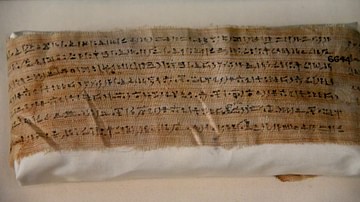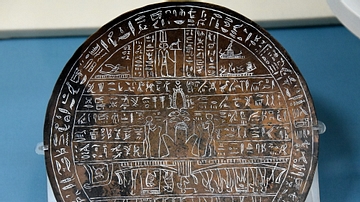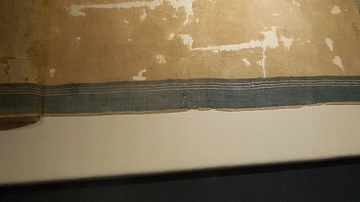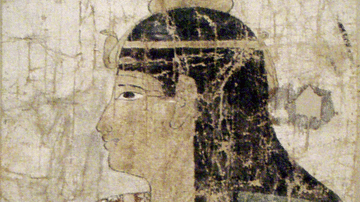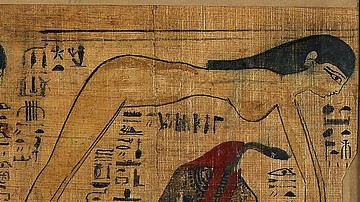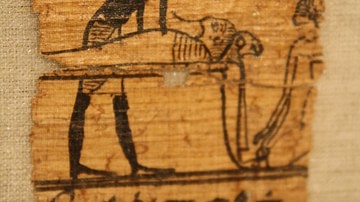Illustration
Hypocephali are inscribed discs usually of plastered linen and less frequently of papyrus or bronze, were placed beneath the heads of mummies in the Late/Ptolemaic Periods. The texts written on them were taken from spell 162 of the Egyptian Book of the Dead and were intended to provide life-giving heat to ensure resurrection of the dead. Images of deities connected with the notion of creative power and renewed life supplemented the potency of the text. We can recognize four painted registers of universal deities surrounded by a border of Hieroglyphic inscriptions. Probably from Thebes, Egypt. Ptolemaic Period, 305-30 BCE. (The British Museum, London)
About the Author
Cite This Work
APA Style
Amin, O. S. M. (2016, April 12). Linen Hypocephalus. World History Encyclopedia. Retrieved from https://www.worldhistory.org/image/4898/linen-hypocephalus/
Chicago Style
Amin, Osama Shukir Muhammed. "Linen Hypocephalus." World History Encyclopedia. Last modified April 12, 2016. https://www.worldhistory.org/image/4898/linen-hypocephalus/.
MLA Style
Amin, Osama Shukir Muhammed. "Linen Hypocephalus." World History Encyclopedia. World History Encyclopedia, 12 Apr 2016. Web. 16 Apr 2025.



